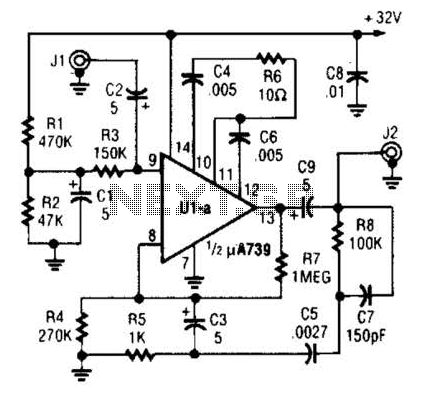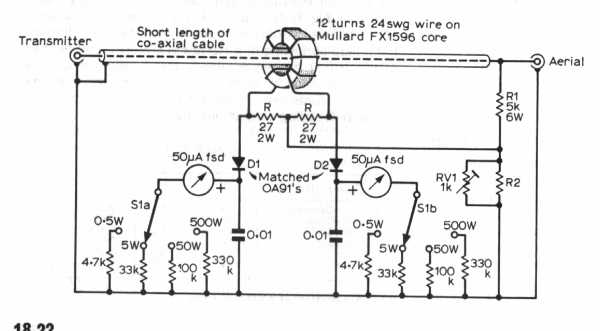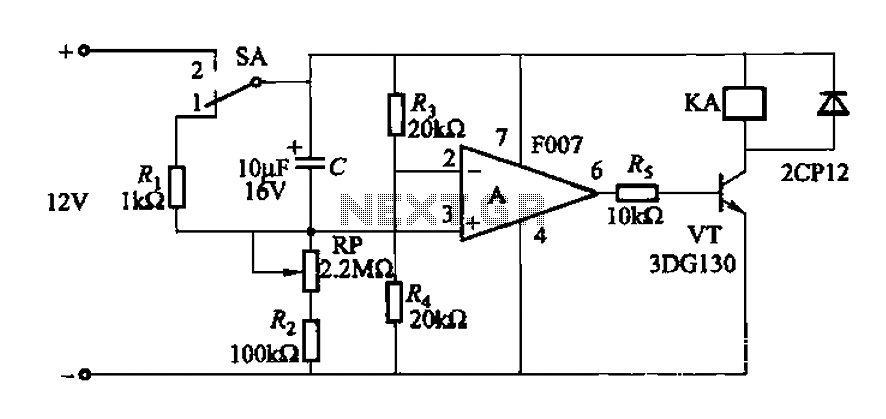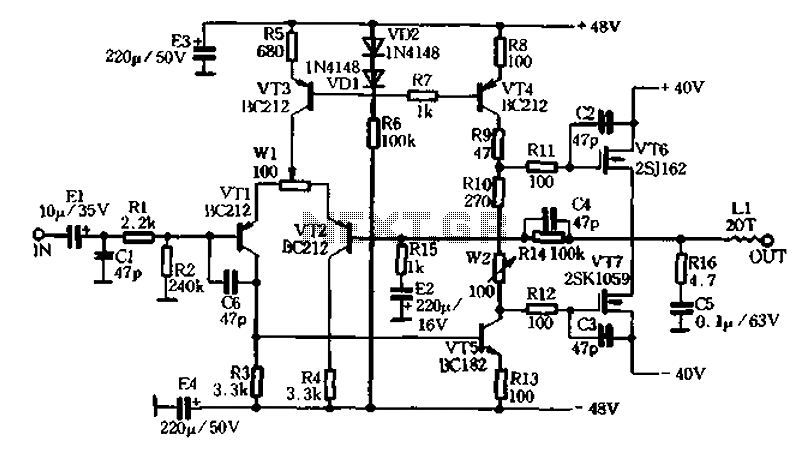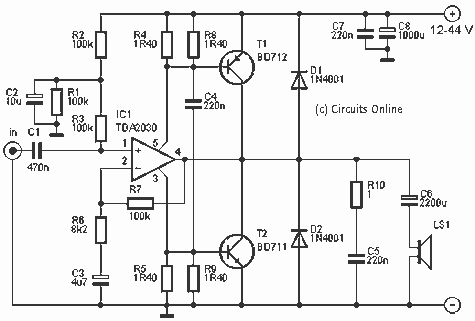
subwoofer amplifier for computer
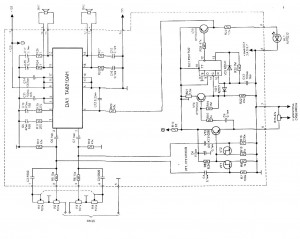
An essential component of modern multimedia computers is the presence of two active audio speakers, which are typically mounted on or placed next to the monitor. Due to various physical limitations, these small computer speakers are unable to reproduce the full range of sound frequencies effectively, particularly resulting in poor bass performance characterized by distortion. To achieve high-quality background music, a third speaker, known as a subwoofer, is often utilized. In high-quality active speakers, such as those produced by Altec Lansing, a built-in audio amplifier features an output labeled "SUB" (model ACS40). This output is specifically designed for connecting a low-frequency active speaker. The circuit employs the K174UN14 integrated circuit from Russia, with its gain determined by the resistor ratio of R8 to R9. The combination of elements R10 and C6 forms a frequency band that amplifies the desired frequencies while enhancing operational stability and preventing oscillation at frequencies above 100 kHz. The signals from the SUB output are directed to a mixer constructed from field-effect transistors (VT1 and VT2), which provides signal isolation between the mixer outputs and amplifies the signal by approximately three times. Resistor R6 is responsible for setting the appropriate sound level for the low-frequency speaker (BA1) in relation to the other speakers, while the main volume and tone control are typically managed through the main amplifier located in the side speaker or via software settings.
The described audio system architecture effectively addresses the limitations of conventional small speaker systems by integrating a dedicated subwoofer for enhanced low-frequency response. The K174UN14 integrated circuit serves as a crucial component in this design, providing the necessary amplification for the subwoofer while maintaining stability across the frequency spectrum. The selection of resistors R8 and R9 allows for fine-tuning of the gain, ensuring that the output meets the specific requirements of the audio environment.
The use of R10 and C6 not only establishes a frequency band for the amplification but also plays a vital role in preventing unwanted oscillations that could degrade audio quality. This design consideration is critical for high-fidelity audio applications, where clarity and precision are paramount.
The mixer stage, utilizing field-effect transistors VT1 and VT2, enhances the overall performance by isolating the outputs, thus preventing interference between channels. The amplification factor of approximately three times ensures that the subwoofer can produce a robust bass response without compromising the integrity of the audio signal. Furthermore, the adjustment provided by resistor R6 allows for a tailored listening experience, enabling users to balance the output levels of the subwoofer with the main speakers effectively.
Overall, this sophisticated audio system design exemplifies the integration of advanced electronic components to achieve superior sound reproduction, catering to the demands of modern multimedia applications.An integral part of modern multimedia computer is the presence of two active audio speakers (mounted on a monitor or set next to it). Due to a number of physical limitations of the two small computer speakers can not achieve a good reproduction of the full range of sound frequencies.
Especially collapses and distorted bass. Therefore, to obtain hi gh-quality background music is usually used yet a third column the subwoofer. In high quality active speakers, such as company Altec Lansing, a built-in audio amplifier has an output labeled SUB (model ACS40, Fig. 5. 1). It is designed to connect low-frequency active column. This circuit uses IC K174UN14 from Russia. Its gain depends on the ratio of resistors R8-R9. Chain of elements R10-C6 band of amplified frequencies limits that increases the stability of work, excluding the occurrence of generation at frequencies above 100 kHz.
Signals from the output of SUB come to the mixer, collected from field-effect transistors (VT1, VT2). Provides isolation between the mixer outputs and amplifies the signal by about 3 times. Resistor R6 sets the desired level of sound in the low column BA1 with respect to the lateral columns, and the main (overall) volume control and tone control is usually performed in the main amplifier on the body in a side column or from the program.
🔗 External reference
The described audio system architecture effectively addresses the limitations of conventional small speaker systems by integrating a dedicated subwoofer for enhanced low-frequency response. The K174UN14 integrated circuit serves as a crucial component in this design, providing the necessary amplification for the subwoofer while maintaining stability across the frequency spectrum. The selection of resistors R8 and R9 allows for fine-tuning of the gain, ensuring that the output meets the specific requirements of the audio environment.
The use of R10 and C6 not only establishes a frequency band for the amplification but also plays a vital role in preventing unwanted oscillations that could degrade audio quality. This design consideration is critical for high-fidelity audio applications, where clarity and precision are paramount.
The mixer stage, utilizing field-effect transistors VT1 and VT2, enhances the overall performance by isolating the outputs, thus preventing interference between channels. The amplification factor of approximately three times ensures that the subwoofer can produce a robust bass response without compromising the integrity of the audio signal. Furthermore, the adjustment provided by resistor R6 allows for a tailored listening experience, enabling users to balance the output levels of the subwoofer with the main speakers effectively.
Overall, this sophisticated audio system design exemplifies the integration of advanced electronic components to achieve superior sound reproduction, catering to the demands of modern multimedia applications.An integral part of modern multimedia computer is the presence of two active audio speakers (mounted on a monitor or set next to it). Due to a number of physical limitations of the two small computer speakers can not achieve a good reproduction of the full range of sound frequencies.
Especially collapses and distorted bass. Therefore, to obtain hi gh-quality background music is usually used yet a third column the subwoofer. In high quality active speakers, such as company Altec Lansing, a built-in audio amplifier has an output labeled SUB (model ACS40, Fig. 5. 1). It is designed to connect low-frequency active column. This circuit uses IC K174UN14 from Russia. Its gain depends on the ratio of resistors R8-R9. Chain of elements R10-C6 band of amplified frequencies limits that increases the stability of work, excluding the occurrence of generation at frequencies above 100 kHz.
Signals from the output of SUB come to the mixer, collected from field-effect transistors (VT1, VT2). Provides isolation between the mixer outputs and amplifies the signal by about 3 times. Resistor R6 sets the desired level of sound in the low column BA1 with respect to the lateral columns, and the main (overall) volume control and tone control is usually performed in the main amplifier on the body in a side column or from the program.
🔗 External reference
